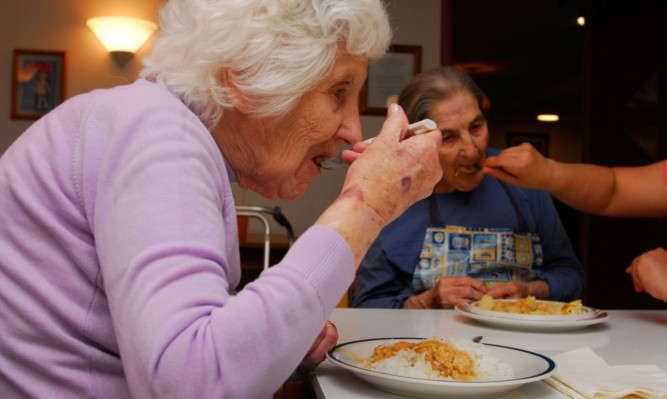Shock figures have revealed thousands of hospital patients in Fife are being treated for malnutrition.
The condition, more commonly associated with developing nations, affected 2,281 patients in 2014 up slightly from 2,229 in 2013.
The NHS said of those who are treated in hospitals for malnutrition, more than 95% have developed the condition prior to being admitted.
They say a number of nutrition initiatives have been worked on over the years to reduce cases from a high of 3,001 in 2012. Efforts have also been made to reduce fatalities, most of which are believed to be elderly patients.
However, Mid Scotland and Fife Labour MSP Claire Baker is demanding to know why cases in Fife appear to be so much greater than Tayside, where a Courier Freedom of Information request revealed just 22 cases of malnutrition were treated during 2014 compared with 21 in 2013.
Ms Baker said: “These figures revealed by The Courier are concerning. Despite a downward trend we are still seeing a significant number of people being identified as malnourished.
“Whilst there has been a slight downward trend in the past few years these numbers are still significant and need to be addressed.
“We have to also ask why the figures in Fife are significantly different from other parts of the country, and where possible, learn from innovative solutions used elsewhere.
“We also need to know the full story behind these figures in order to understand if a culture change is needed in Fife and I’ll be writing to NHS Fife to ask for more information.”
Common Good Food is a brand new organisation that aims to champion community-scale food production having emerged from the Fife Diet, Scotland’s recently folded local food project.
Common Good Food spokesperson Mags Hall said she could not comment on the statistics as such.
Such a big difference would suggest to her a disparity between the way NHS boards are recording cases, rather than a real terms difference in the levels of malnutrition from one side of the Tay to the other.
However, she said the fact that anyone in Scotland is presenting at hospital with malnutrition is an “absolute injustice”.
She said: “Fife and Tayside are two of the most fertile regions in the UK.
“We are surrounded by quality, healthy food and yet huge sections of the population struggle to access this.
“As well as addressing wider social issues such as inequality and benefits changes, Common Good Food believes the best way to tackle malnutrition is to build a food system which works for people and the environment, creating short local supply chains, diversifying the distribution and retails models that we have, and using our agricultural land in a sustainable way.
“We also want to see communities empowered to grow, sell and eat their own food, encouraging a shift in our relationship to food in Scotland, and creating a social safety net in our communities that gives the most vulnerable in society access to fresh healthy food in times of need.”
Malnutrition is the condition that develops when the body does not get the right amount of the vitamins, minerals, and other nutrients it needs to maintain healthy tissues and organ function.
